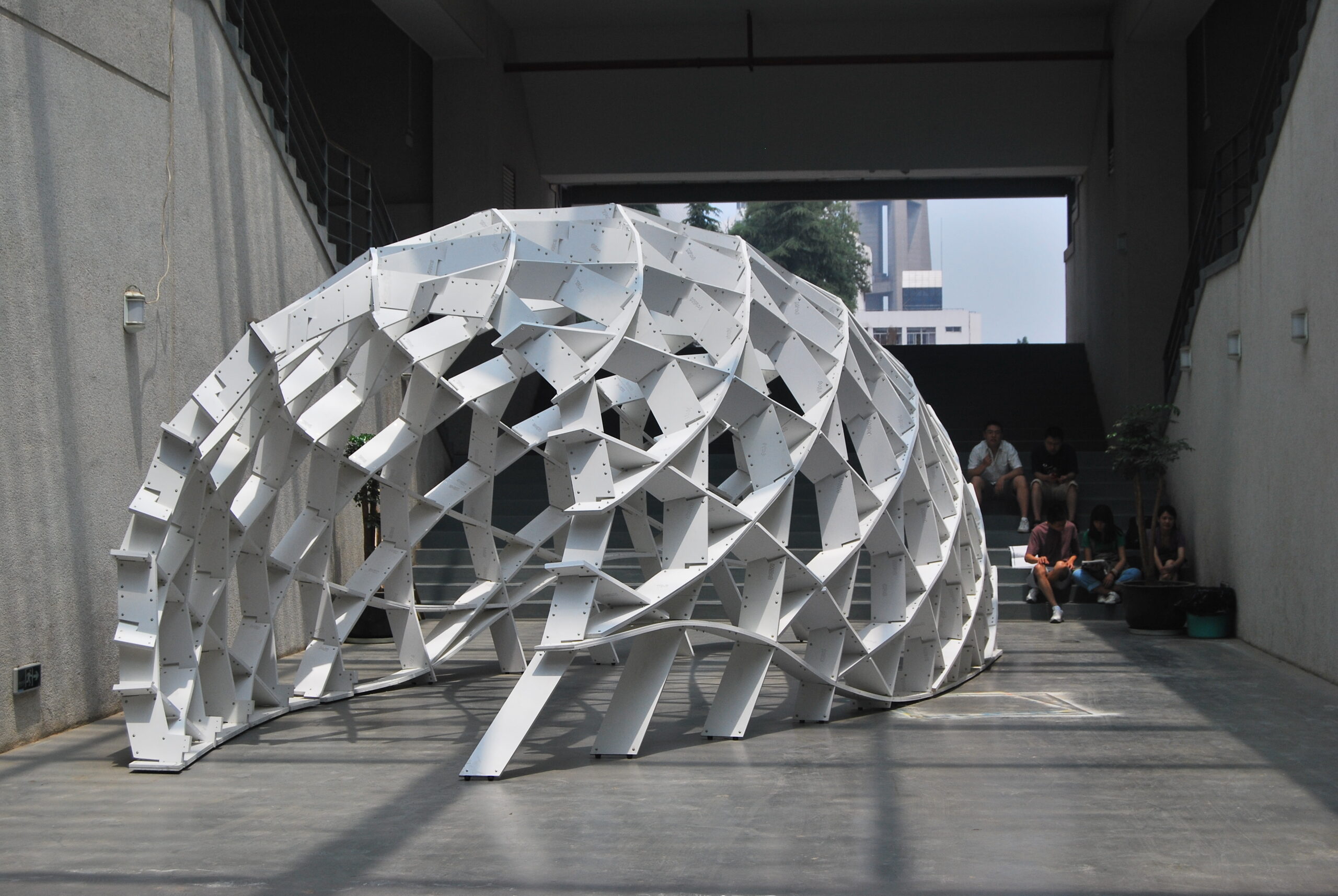Nanjing Pavilion
2010 Digital Fabrication Parametric DesignThe goal of the project is to create a platform which would establish a connection and certain exchange between the students of Nanjing and those of the TU Delft. This should be a viable way for linking shared interests. These interests shift with time and are likely to be exposed more often when participation is high. We suggest the building of a platform in the physical shape of a Pavilion which would fulfil this function. The Pavilion is the framework in which a constant exhibition lures the curiosity of the bystander. This is a platform to show off your skills and ambition and get constant feedback from fellow students around you or even those half ways around the globe who would shed a different light on your thoughts.
More Info
Location and concept
The pavilion is at a cross point. A pace through which many students pass from different directions. It is a place where it’s not likely to see people standing around but actively commuting from their own place to the other. By placing this structure in this space you can trigger people to take a look at what is going on in the pavilion on their way to the next destination or linger for a while during a break . The whole Pavilion and project revolve around the exchange of information and communication between different students in different contexts. Thus the design revolves around a concept based on the Neuron as it is perhaps one of the most fascinating building blocks based on communication.
The main characteristics of the neuron, which we also tried to incorporate into the design as a neuron: a) means nothing on its own but together they mean more than the sum of elements; b) establishes connections with other neurons and strengthens the ones most used; c) receives information, processes the information and when a certain threshold is reached it sends out information.
Parametric design and BIM
The pavilion is designed using a parametric design approach. A 3D model controlling all of the building’s constructive and non-constructive elements is the basis of the design and fabrication process. All building elements have been fabricated using CNC and F2F (file-to-factory) fabrication methods, supported by the parametric 3D-model, which functioned within a BIM (Building Information Model)-environment, where all costs, product lists, and project planning were being maintained. This is a design strategy, no specific formats or platforms are readily available, so on-demand solutions for data flow and data exchange were generated during the course of the design process.
Structure
A repetitive hexagonal structure is constructed in such a way that a triangle is formed on each side of the hexagon. In reality, the mesh is a triangular one where every second line is left out thus revealing hexagons. Also based on the idea of a neuron essentially it is a network of nodes. A single node cannot do anything, but the composition of several nodes creates a constructive network.
Fabrication and assembly
All the parts of the pavilion are produced by a CNC milling machine, this included bolt holes and the name of each element engraved in the material. The beams were ordered by their coding and bolted together after which they were put into place using a scarf joint construction.
Interaction
The system would encourage and sustain the exchange of creative ideas. Firstly a database of student work is built up. This database is web-based and every student from Delft and Nanjing can upload his or her project. The pavilion works as a system in which one is basically strolling through the database looking for projects. Based upon the tags given a project gets selected and is put into the exhibition cycle. When a certain threshold is reached a project from Nanjing is displayed in Delft and the other way around. In the Nanjing Pavilion, the projects are displayed on LCD monitors making an exhibition wall. The expo wall is in constant rotation, projects flash from one screen to the other making the whole a dynamic show to watch. People can respond to the project. The more popular a project seems to be the longer it stays in the cycle.
Credits
Team
Mariana Popescu, Frank van Brunschot, Bart Kuijpers, Joeri Slots, Sven de Haan
Supervisor
Kas Oosterhuis
Tutors
Owen Slootweg, Nora Schueler, Han Feng









